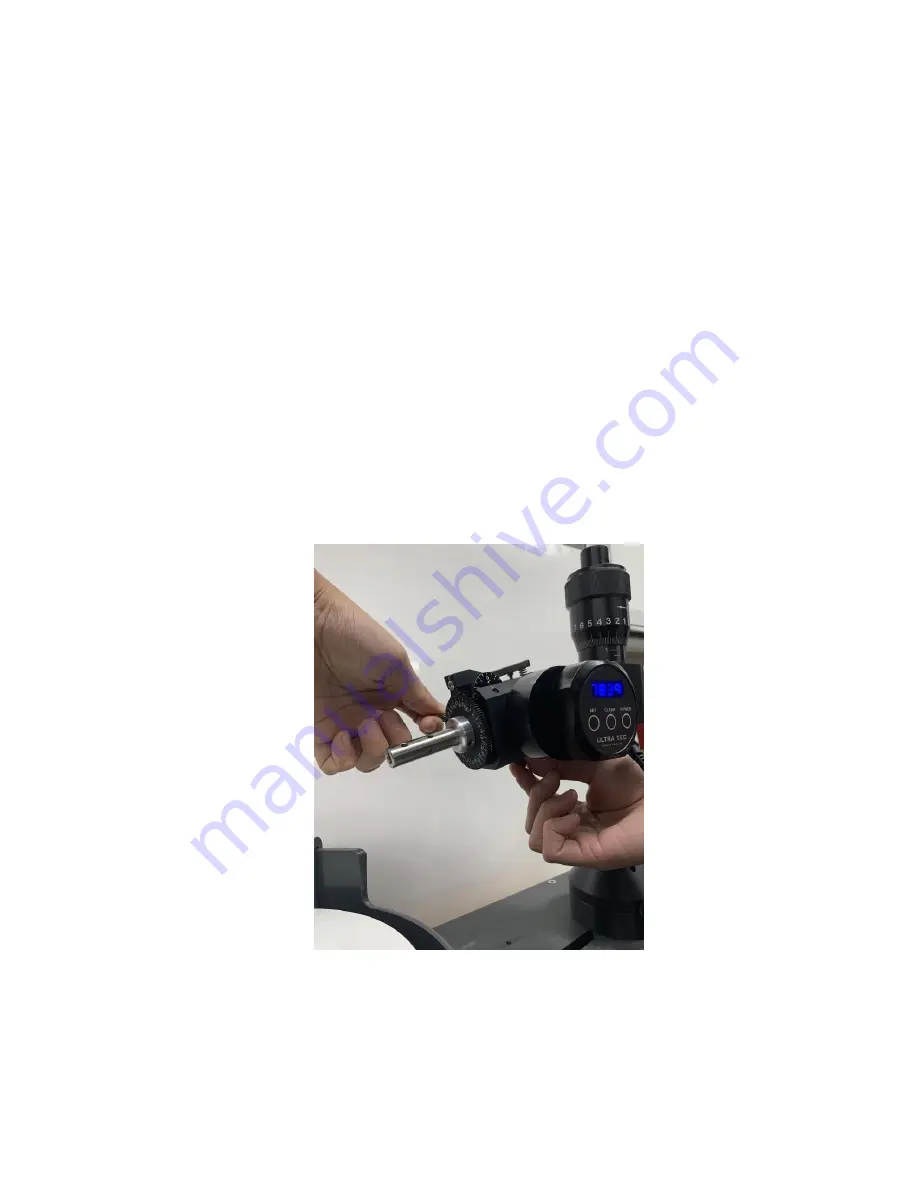
Version 1.05 March 2020
16
Fine Adjustment Knob (D), pointing up from the upper Yoke surface. Tightening that Lever locks the angular
setting of the quill.
The round central Tension Knob (C) functions as a brake - when the Knob is backed off (CCW), the quill
swings down freely
– as you turn the Knob in (CW) it starts to act as a brake, slowing the swing-down of the
Quill, and, with the Knob fully tightened (CW) it acts as a full brake.
When you
use
these angle setting and adjusting features, you will not be looking at them (they are in the rear),
rather, you will be feeling them as you look at the front of the Mast, as is shown in the photo and text below.
To set an angle:
1)
Loosen the Collar-Locking Knob permitting you to swing the Carriage toward yourself
– to a position that
feels convenient, and with your stone off and away from the Lap.
2)
Loosen the Carriage Knob and raise the Z-position (height) of the Carriage to the upper portion of the
Positioning Cylinder
– just where? Where it’s convenient – a little bit of experience will teach you. Lock the
Carriage Knob. Lock the Collar-Locking Knob.
3)
Loosen the Angle Stop Locking Lever, releasing the Angle Stop from its locked condition, so that the angle
can be changed. You may wish to put some degree of braking action onto the quill.
4)
As you move to the next angle, hold the Quill wit
h your left hand (making it a “handle”). Reach under the
Angle Stop with your right fingers and push up and hold the Angle Stop
–in contact with the Stop (the Stop itself
is end of the fine-adjustment Screw
– hold it there.
5)
Tighten the Angle Stop Locking Lever (if you have put some braking pressure onto the Quill, release it
– the
Angle Stop Locking Lever will hold sufficiently.
6)
Fine adjust the angle setting, as required.
The same sequence is used for a Digital readout or an Analog readout.















































